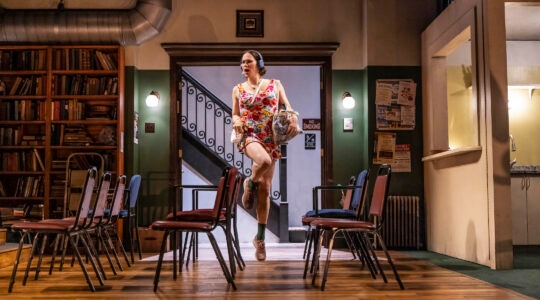I kept meaning to go to Girona. The Catalan city in the Pyrenees is the regional standout on the Caminos de Sefarad (“Paths of Sepharad”), an evolving Spanish network of Jewish heritage sites.
But in June, it was already summery-hot; the beach beckoned, and Girona lies inland. So I headed north along the Costa Brava, toward another, smaller city on the Camino list: Castelló d’Empúries.
It was the kind of sleepy town you might ordinarily drive right by en route to better-known resorts like Roses, home to the world’s most famous restaurant (El Bullí), or Cadaqués, where Dali and Lorca used to hang out. That’s an advantage of the Caminos: they take you off the beaten path to places like Castelló. At the same time, Jewish itineraries in well-known places like Seville and Toledo offer a new angle on well-trodden destinations (and a break from palaces and cathedrals).
Strictly speaking, Castelló d’Empúries is not on the coast, but it’s very close. Medieval Castelló and its neighbor, the modern suburb of Empuriabrava, mark the junction where coastal wetlands meet the mountainous Cape of Creus — and the most exclusive resorts of the Costa Brava.
Eight hundred years ago, however, beaches were peripheral to the local scene. With two synagogues, a cemetery and a thriving merchants’ quarter, the Jews of Castelló built a prosperous community in the Puig de L’Eramala district, under the protection of the local Counts of Empúries.
The 1200s were the city’s heyday; little of note has happened since. Jews were either exiled or converted (in huge numbers) by 1492, when Ferdinand and Isabella united modern Spain, and Castelló lost status and influence. Commerce and population moved to the big cities, Barcelona and Perpignan, France. The surrounding countryside was given over to apple orchards and wine vineyards, the coast was developed for tourism, and Castelló seems gently preserved in the 15th century.
Past Gallarda Gate, the medieval city wall, Castelló’s central plaza is so quiet at midday that it feels as though the town has been evacuated. That plaza is all but dwarfed by the massive Basilica of Santa Maria, a somber Gothic edifice with a cathedral-like scale. As the basilica was under construction, 14th-century fanatics were busily baptizing Jews; 200 new conversos were minted in 1417 alone.
Hebrew gravestones at the Museum of Medieval History are a poignant reminder of once-proud Jewish community. Today you can walk the old Jewish quarter, with or without a municipal guide to tell a story already familiar to students of European Jewish history: there were periods of tentative favor and prosperity, followed by waves of repression and expulsion. A synagogue built at the community’s zenith — 1284 — still stands, though it is now a private home.
In early September, as towns across Catalonia wave red-and-yellow flags to celebrate a national holiday, Castelló hosts a festival known as “Terra de Trobadors.” This year’s theme is “Time of the Sephardim” with three days of Ladino music, tours conducted by costumed troubadours, handicrafts, and medieval-style taverns offering Sephardic cuisine. There was even a recent Sephardic recipe contest: the winner was a spice-nut cake scented with local oranges.
Kosher is a vague concept in modern-day Spain, but interest in Sephardic cooking has blossomed here as well as in the U.S. Dates, pomegranates, pine nuts, lemons and almonds: with ingredients like this, what’s not to like? Mindful of this draw, officials at the Red de Juderías de España — the consortium that organizes the Caminos — is promoting Sephardic-style menus at local restaurants.
After having my share of eating spice cake and wandering the medieval streets of Castelló, I was ready to move on. The town is ideally situated to be a base for exploring the region. Within a half-hour’s drive, you can scale the Pyrenees, check out the famous Salvador Dalí museum in Figueres, or explore all those beaches beckoning on the Cap de Creus.
The latter is what Dalí himself did. He, Lorca and the painter Max Ernst spent summers in Cadaqués, a whitewashed fishing village on a bay at the Cape’s far end. Driving there is spectacular: along the glittering Bay of Roses, up into the wild green mountains, blue sea stretching as far as the French border.
What Dalí and Ernst left behind fills a sprinkling of small museums, and artists they inspired contribute to a lively gallery scene. With breezy terraces and a boat-filled harbor, Cadaqués offers respite — from both the summer heat and the weight of history.
The New York Jewish Week brings you the stories behind the headlines, keeping you connected to Jewish life in New York. Help sustain the reporting you trust by donating today.




